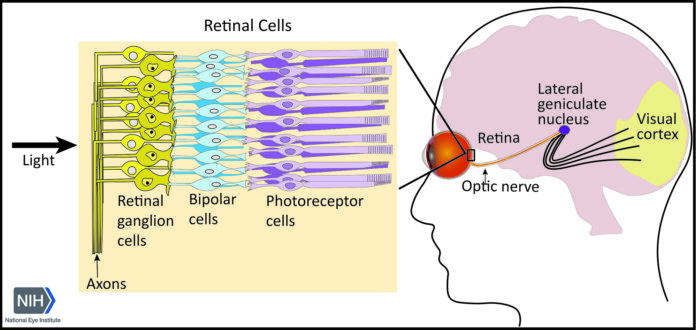Bethesda, MD – A new study out of Maryland is shedding light on how the brain processes visual information after retinal damage—and how interactive video games might play a future role in helping restore vision.
Researchers at the National Eye Institute (NEI), part of the National Institutes of Health (NIH), have identified specific brain circuits involved in visual acuity that are significantly impacted when retinal cells are injured. The findings, published this week in The Journal of Neuroscience, open the door to therapies that go beyond the eye and focus on retraining the brain’s visual processing pathways.
According to the study, scientists used an animal model to observe how the lateral geniculate nucleus (LGN)—a key relay center between the eye and the brain—responds when retinal ganglion cells (RGCs) are damaged. They found that X-LGN neurons, responsible for processing fine visual detail, were severely impaired following injury, while Y-LGN neurons, which detect motion, remained relatively unaffected.
“Brain circuits downstream of damaged or dying retinal cells in the eye may also undergo some loss of function following changes to their retinal inputs,” said Farran Briggs, Ph.D., senior investigator at NEI. “Vision restoration therapies, such as video games, (could) provide interactive feedback.”
The study points to the potential for game-based or feedback-driven visual therapies to help stimulate and retrain damaged neural pathways, offering new hope for patients undergoing treatment for degenerative eye conditions.
Researchers also noted that the model may prove useful in studying how visual processing changes in neuropsychiatric conditions like schizophrenia.
This article was produced by a journalist and may include AI-assisted input. All content is reviewed for accuracy and fairness.
Follow us on Instagram & Facebook for more relevant new stories and SUPPORT LOCAL INDEPENDENT NEWS! Have a tip? Message us!




